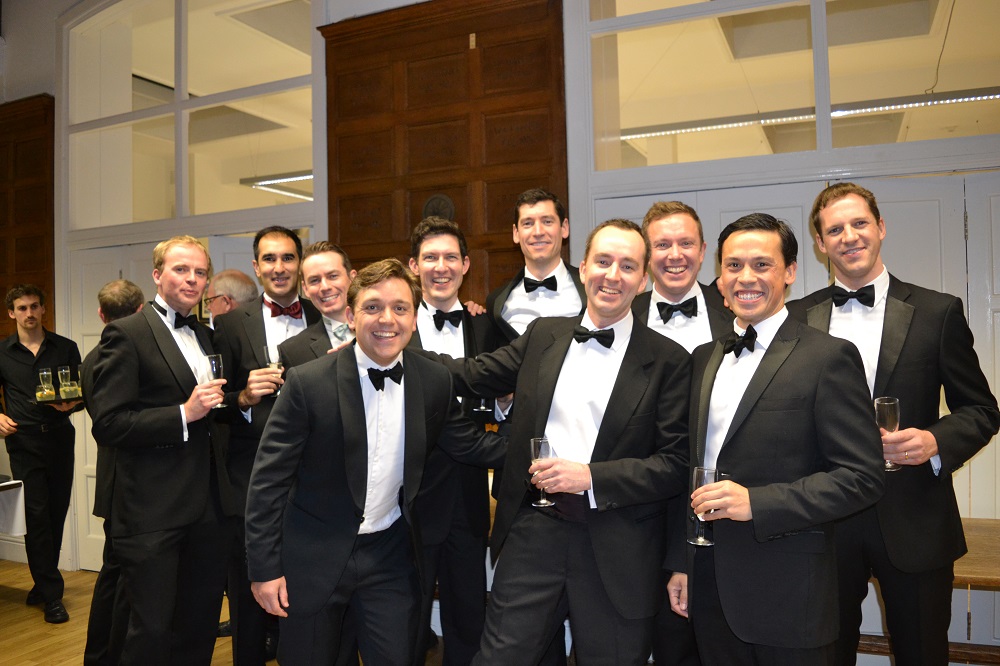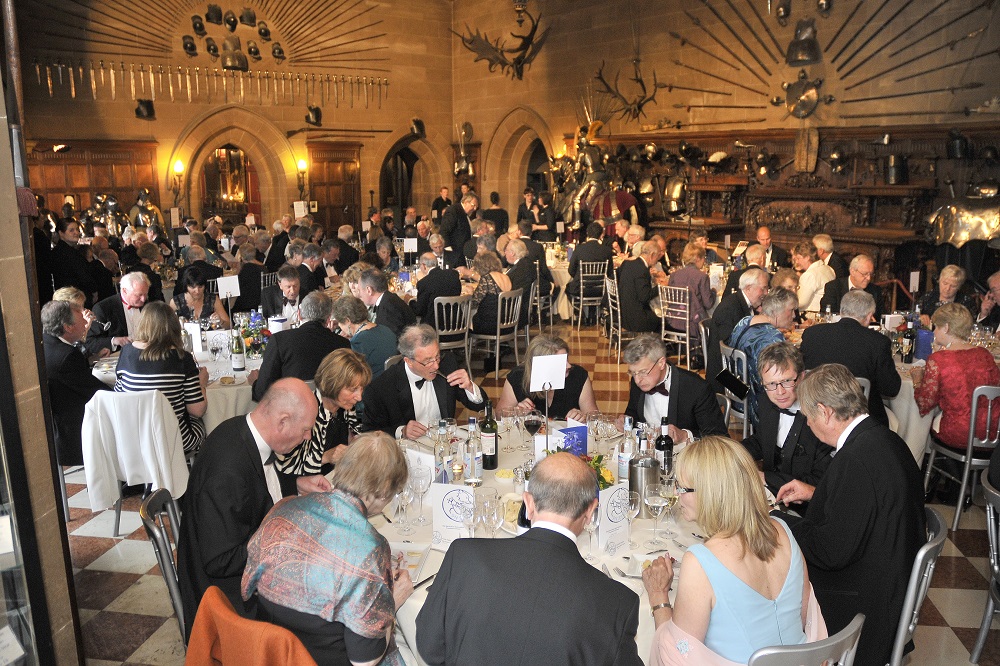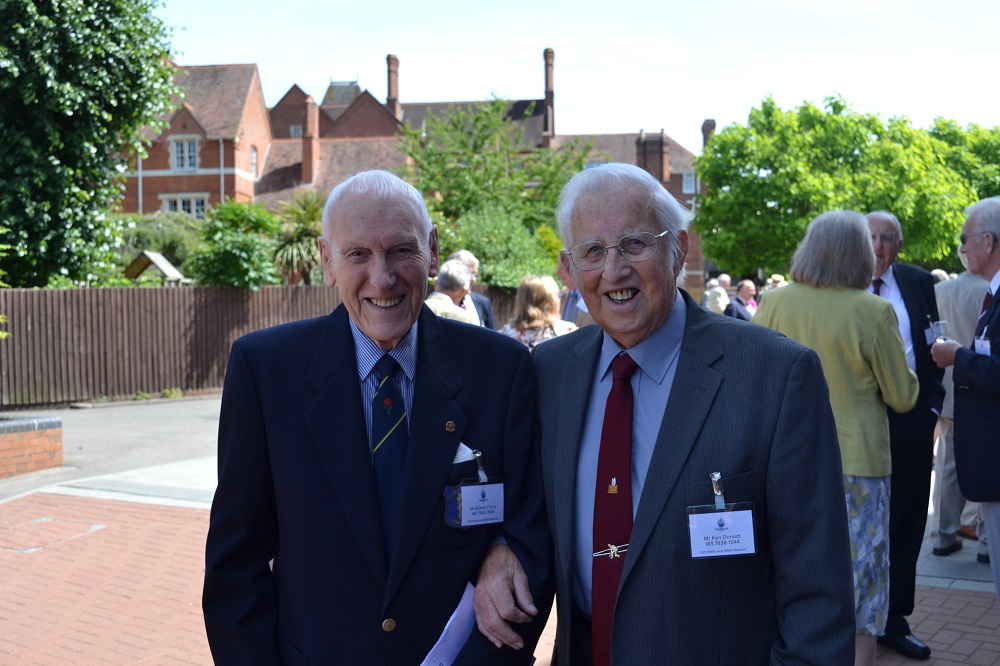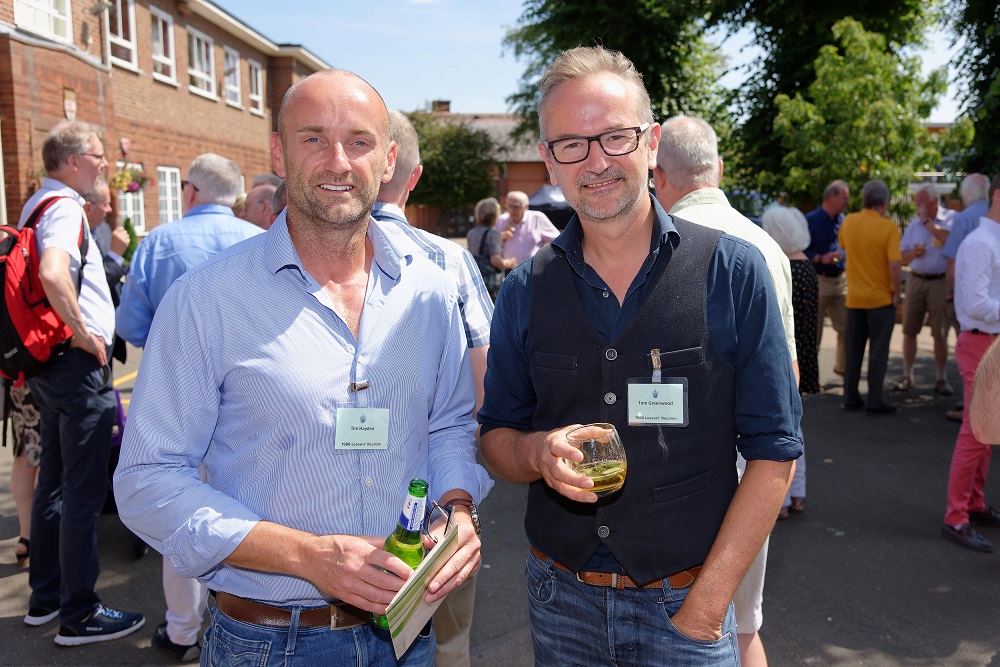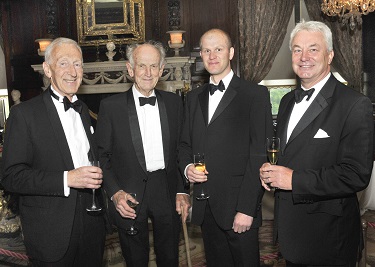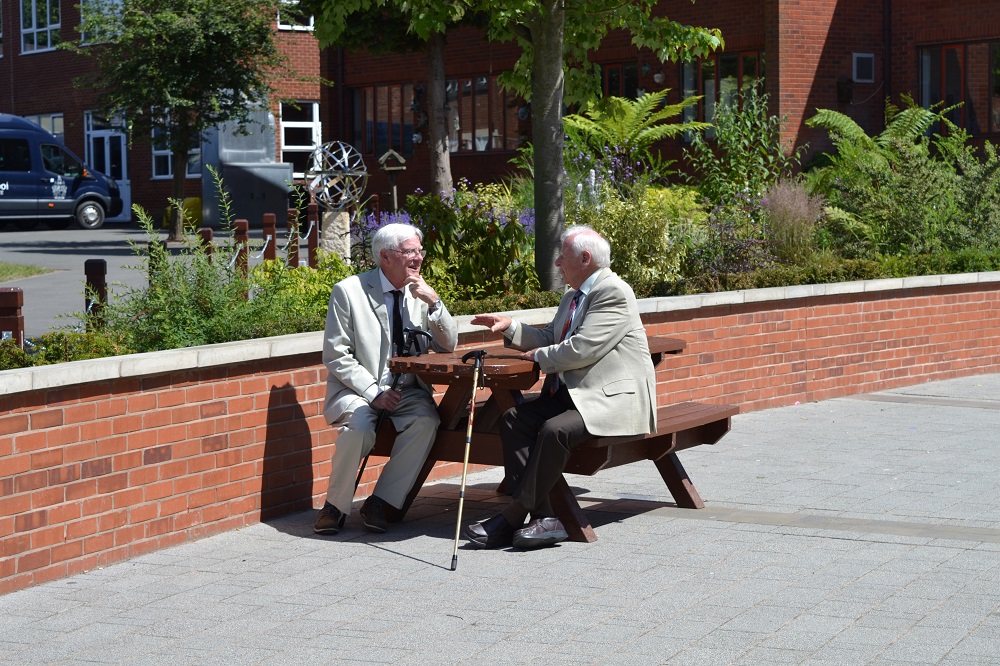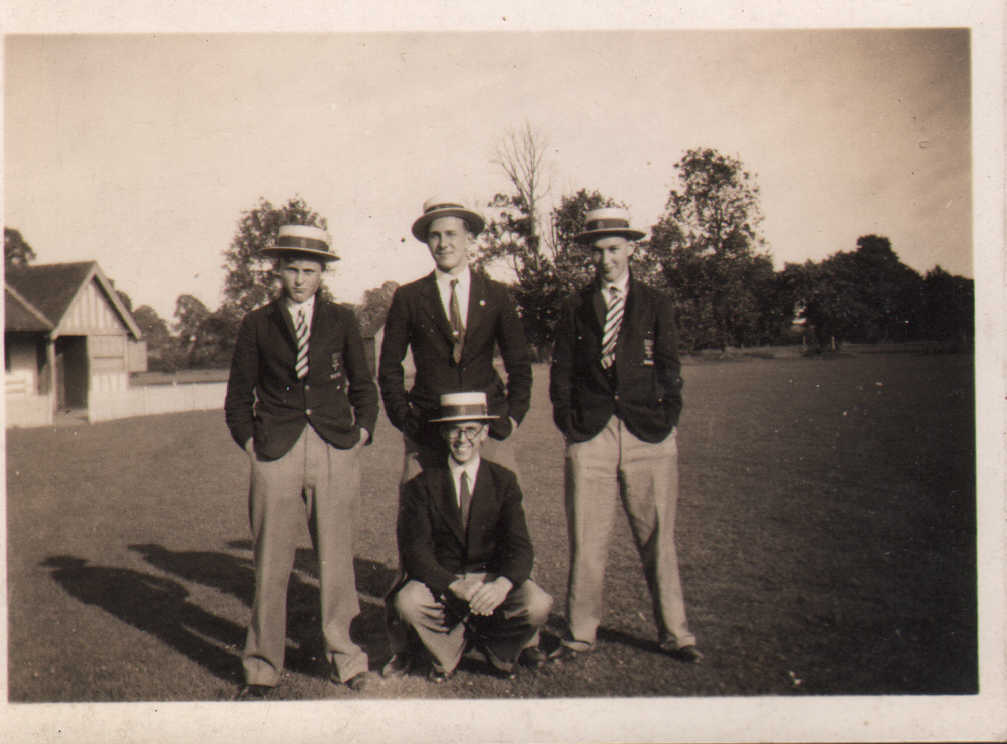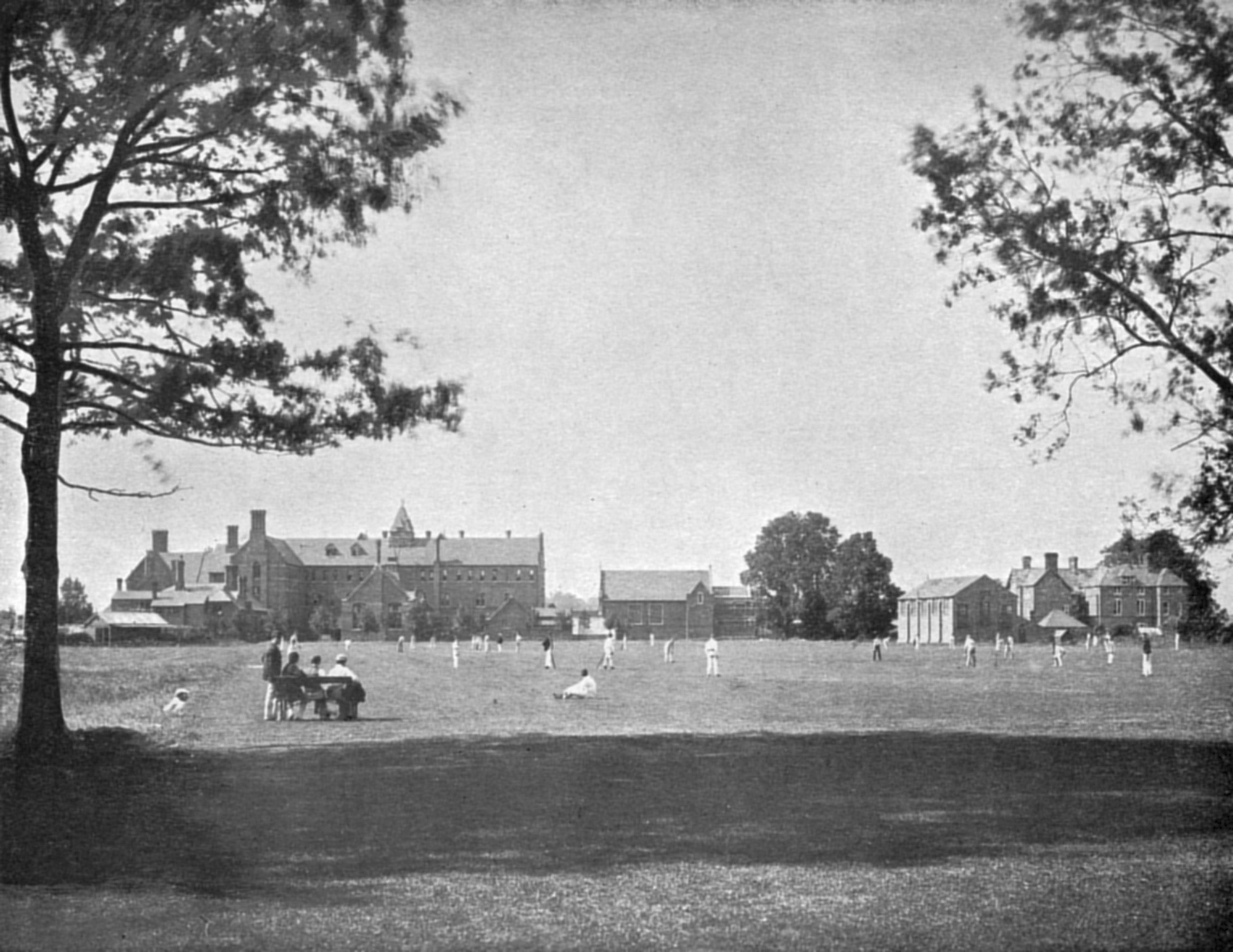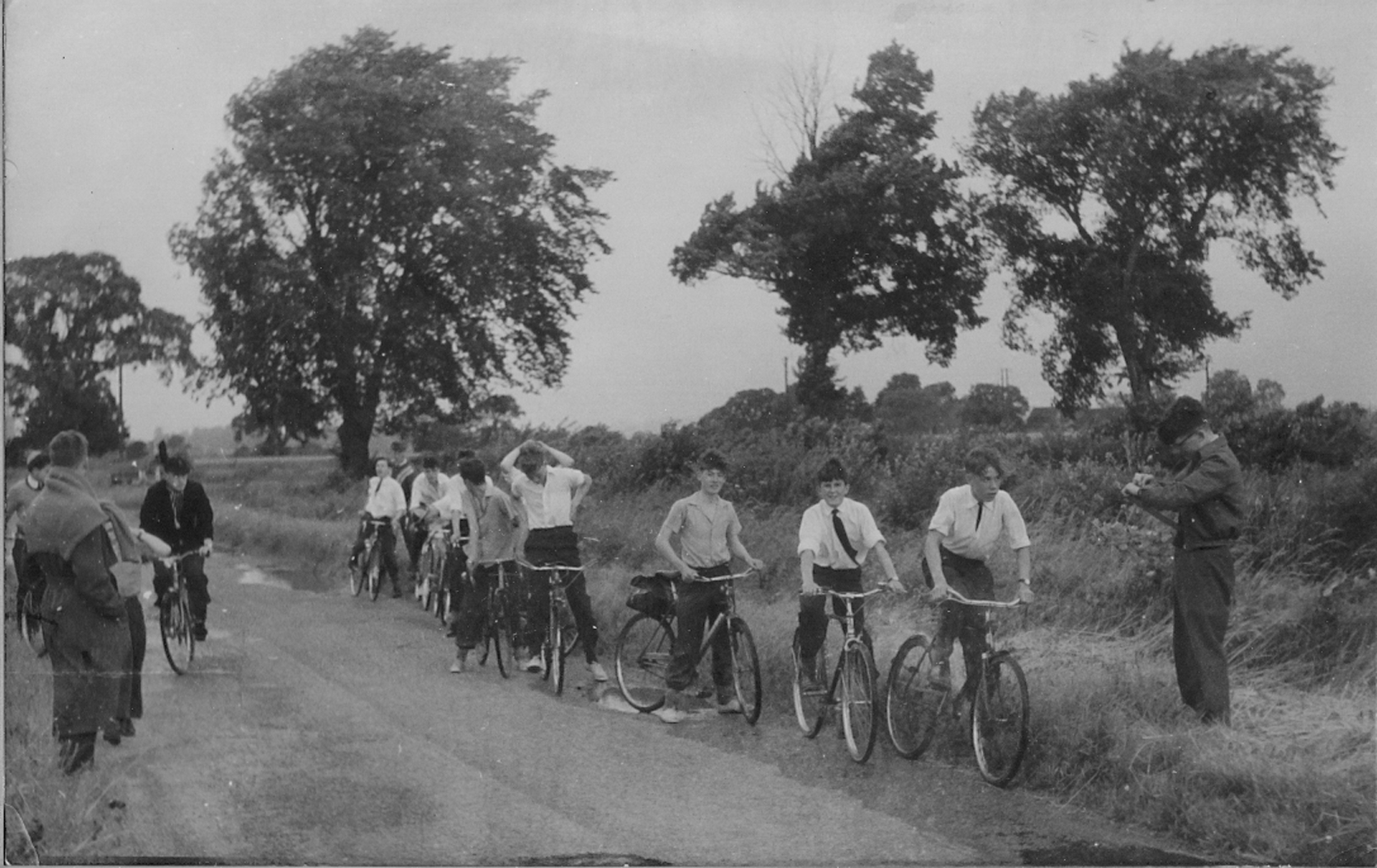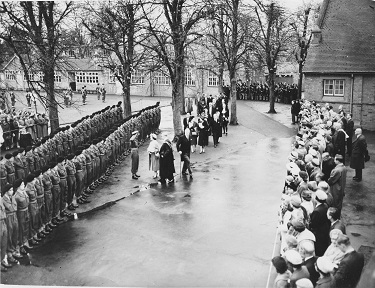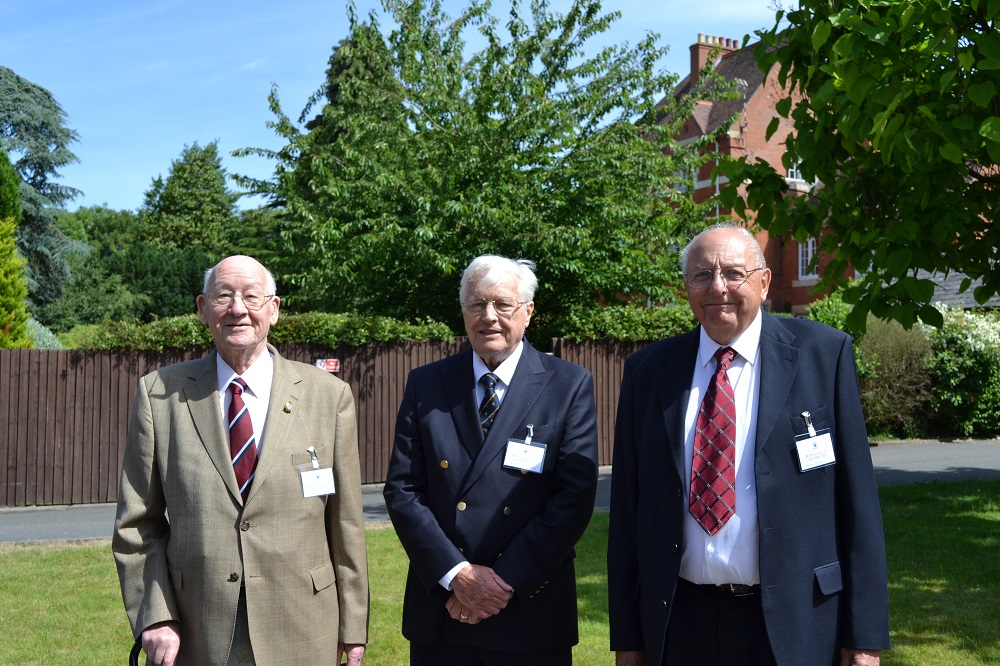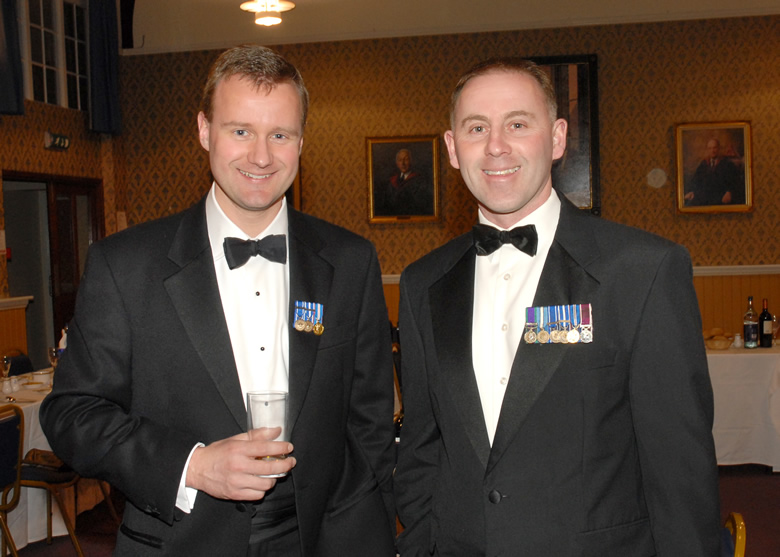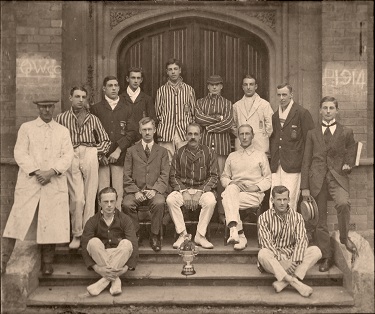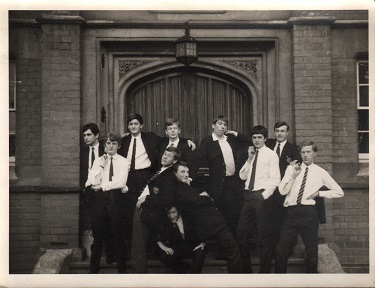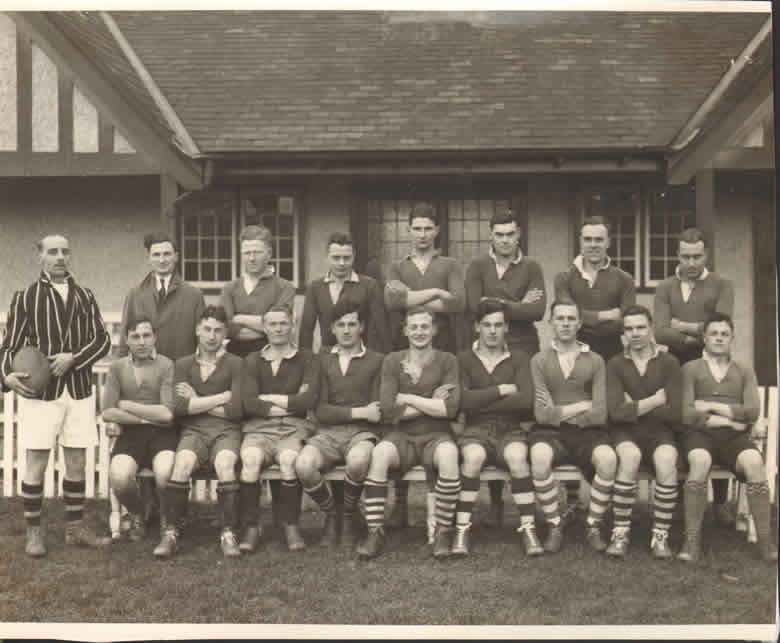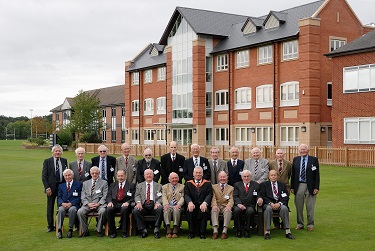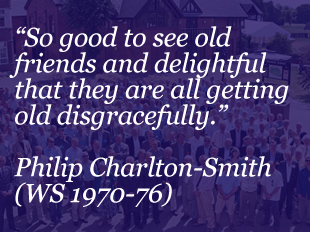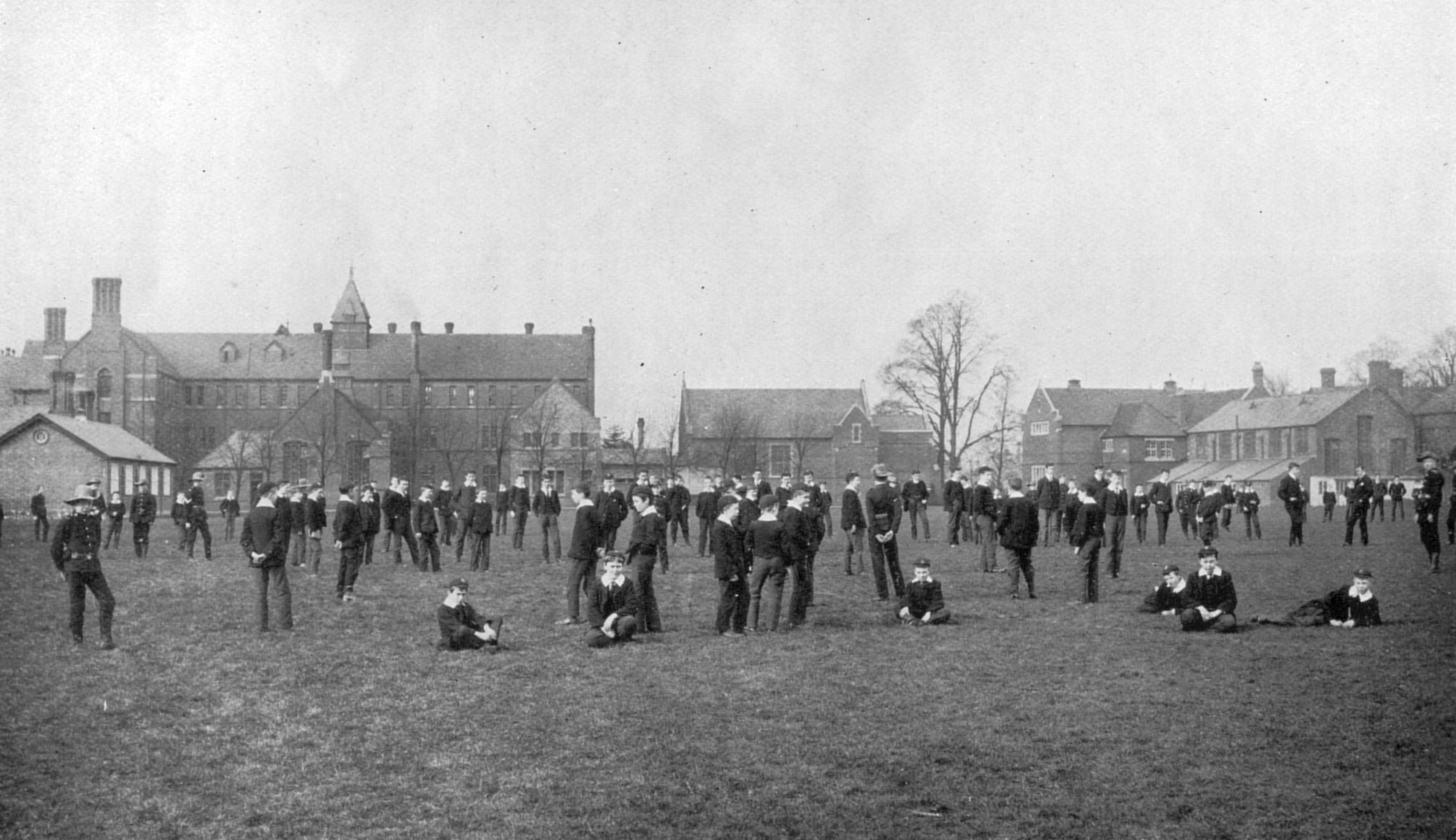What's in a window?
The impetus for this investigation is the story behind the east window of Warwick School chapel. It was inserted between 1902 and 1906, and was designed by the eccentric pre-Raphaelite Henry Holiday (1839–1927) at a total cost of £114-4s. The fact that it took years for Mr Holiday to get his money demonstrates the perilous state of the school’s finances at the time – and, of course, the school went bankrupt and changed direction completely in the summer of 1906. It is no wonder that the governors seemed reluctant to pay their dues.
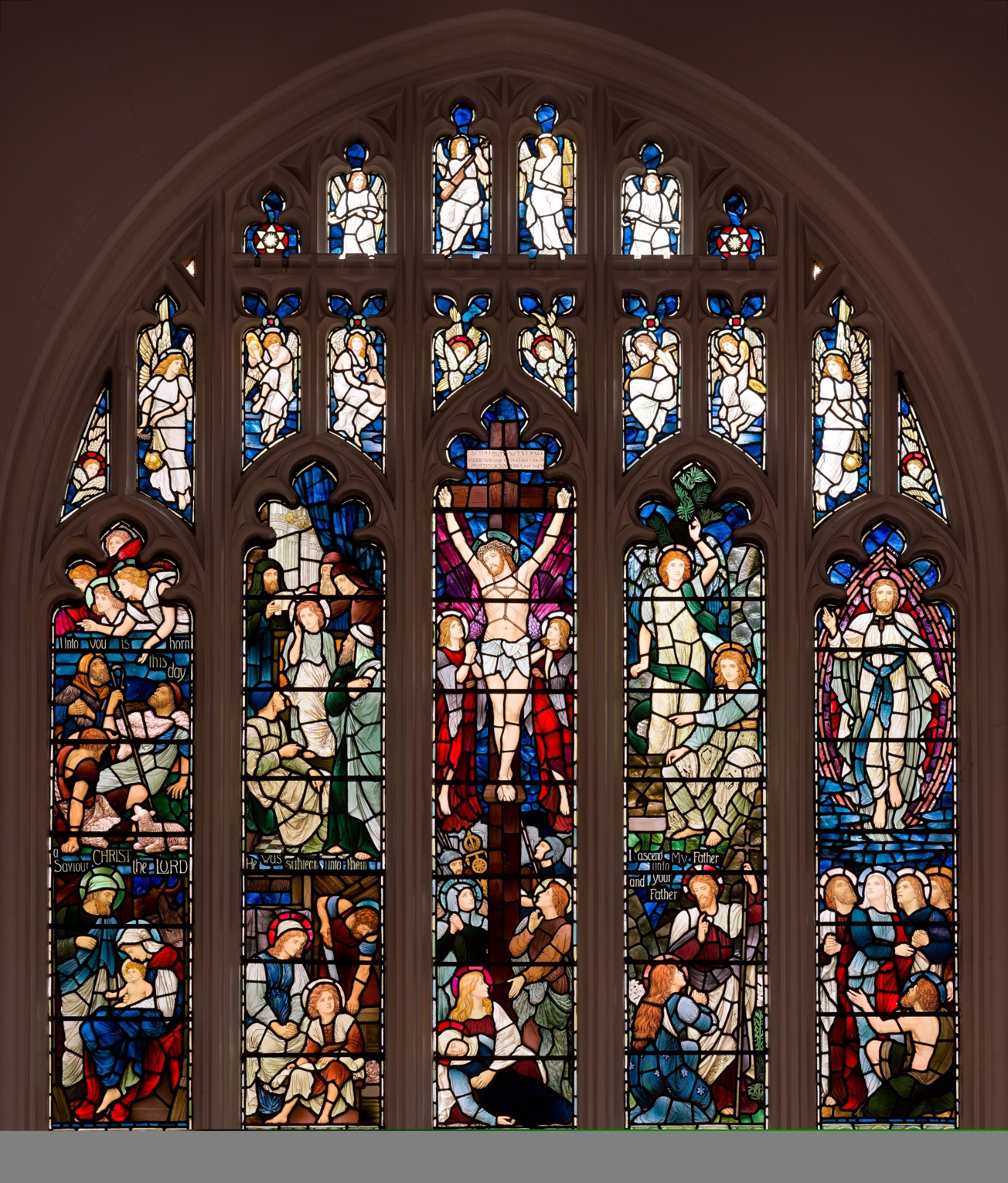
The chancel of the chapel had been completed – with plain glass in the window – in 1893. In the spring of 1902 the school was in crisis on several fronts. A head-on confrontation with the King’s Middle School (led, at the time, by one H. S. Pyne) and almost complete lack of support from Warwick School’s governing body led to falling numbers of pupils, severe financial losses – and a request for the headmaster, Rev. R. Percival Brown, to resign.
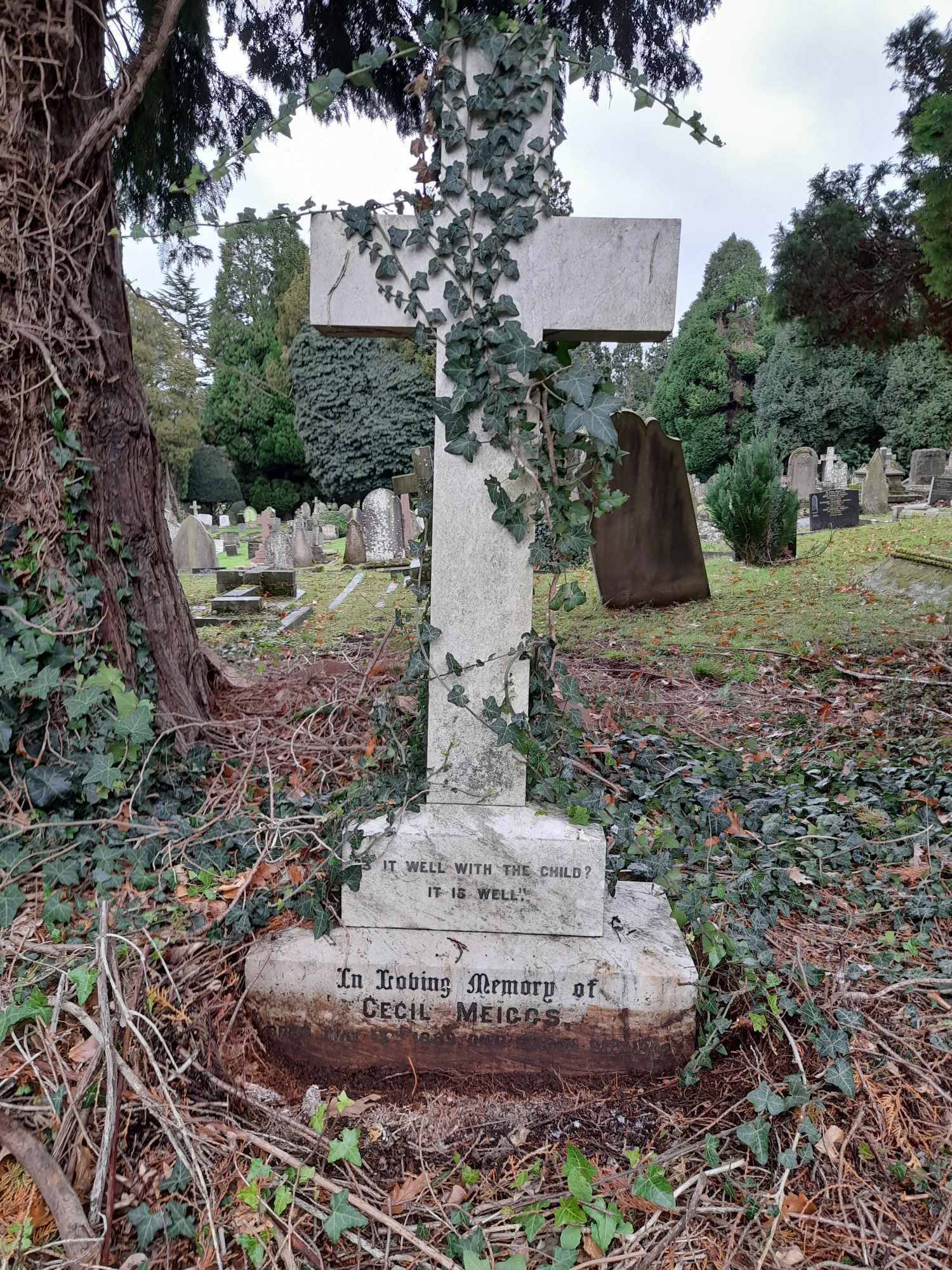
The school was not immune to infectious diseases in those pre-antibiotic days, and the Lent term of 1902 was no exception. The term finished with the tragic death in the school sanatorium (the site of the present science block) on 31st March of a 12-year-old boarder, Cecil Meiggs, from septic pneumonia. The funeral in the school chapel was beautifully choreographed by the headmaster, with a wreath of white lilies above Cecil’s empty seat in the choir (he was the chief solo treble of the chapel choir) and the whole of the school’s Rifle Corps, in which Cecil had also been an under-age member, sat in full dress uniform nearer the door. The weather that day was particularly Gothic, and the Corps, lining the driveway, “presented arms as the dead passed through their midst, after which they marched in slow time to the road with reversed arms, the whole School following as far as the gates.” Here “the Corps seized the opportunity to put on capes, and shield themselves from the biting blast, and torrents of rain which were descending. The whole staff of Masters followed in carriages to the grave.” The Corps led the horse-drawn procession to the grave-side at Warwick Cemetery, where they “took up their position some yards distant, on every side, leaving a space for the mourners, with bowed heads stood at ease. While the coffin was being lowered into the grave, the Corps again presented and reversed arms, after which the Head-Master pronounced the Benediction, and the Cadets marched off in quick time with fixed bayonets, leaving the mourners at the grave.”
So who was Cecil Meiggs? “Though not a brilliant boy, he was exceedingly painstaking, and, in spite of his few years, had already attained to a form intended for much older members. Gentle and unassuming, he was the soul of honour, and throughout the three years of his life at School [in fact, it was less than two], was never known to say or do a base thing. When our own time comes may we each leave as fair a record behind”, exhorts a 1902 edition of The Portcullis magazine. In fact, at the time of his death, Cecil was in 10th position in the Lower Third, a form containing, as was usual at the time, bright boys of 10 years of age, ready to be rapidly promoted and less able boys of up to 15 years old.
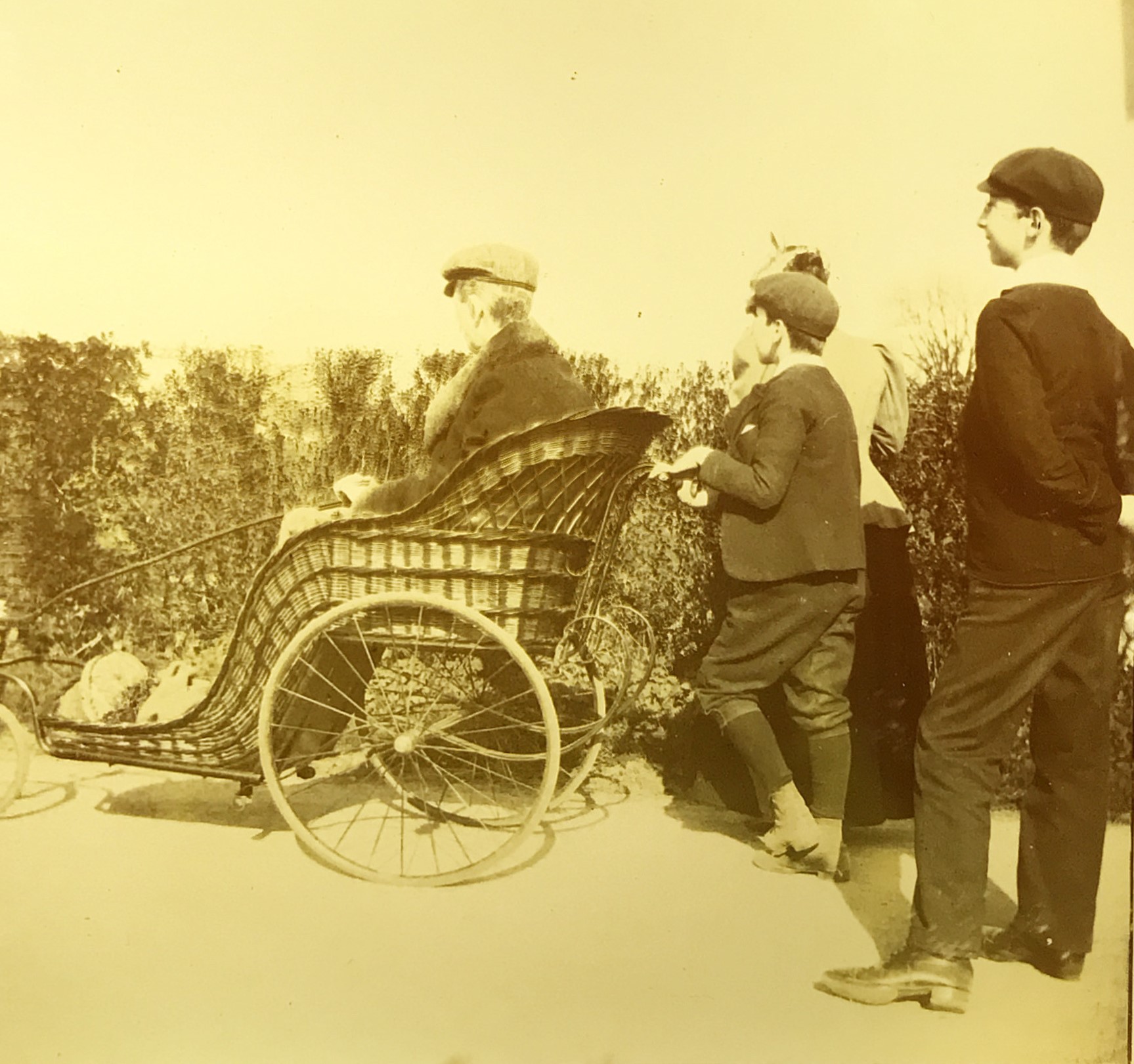
Cecil was the second son of Henry and Gertrude Meiggs, of Wickhambreaux, near Canterbury, Kent. The family also had property in Kensington, London. Henry Meiggs was a railway contractor who had learned his craft from his father, John G. Meiggs (1827–1904), and his uncle, also called Henry Meiggs (1811–77), a notorious entrepreneur involved in developing railways in South America, while hiding from creditors in the North, having forged half a million dollars-worth of bank credit notes. Henry Snr and John Meiggs set out in 1849 to sail from New York with a ship-load of seasoned timber which they sold at vast profit. Henry has a wharf named after him in San Francisco, and he founded a town named Meiggsville, now called Mendocino, in California. Before he died, he claimed that he had paid back every cent of the money that he owed.
Henry Jnr’s father, John Meiggs (1827–1904), Cecil’s paternal grandfather, was at one time City Treasurer of San Francisco. He was also a timber merchant who made and lost several fortunes in the USA and South America. The family moved to London in 1876, and lived ostentatiously there, with 12 servants.
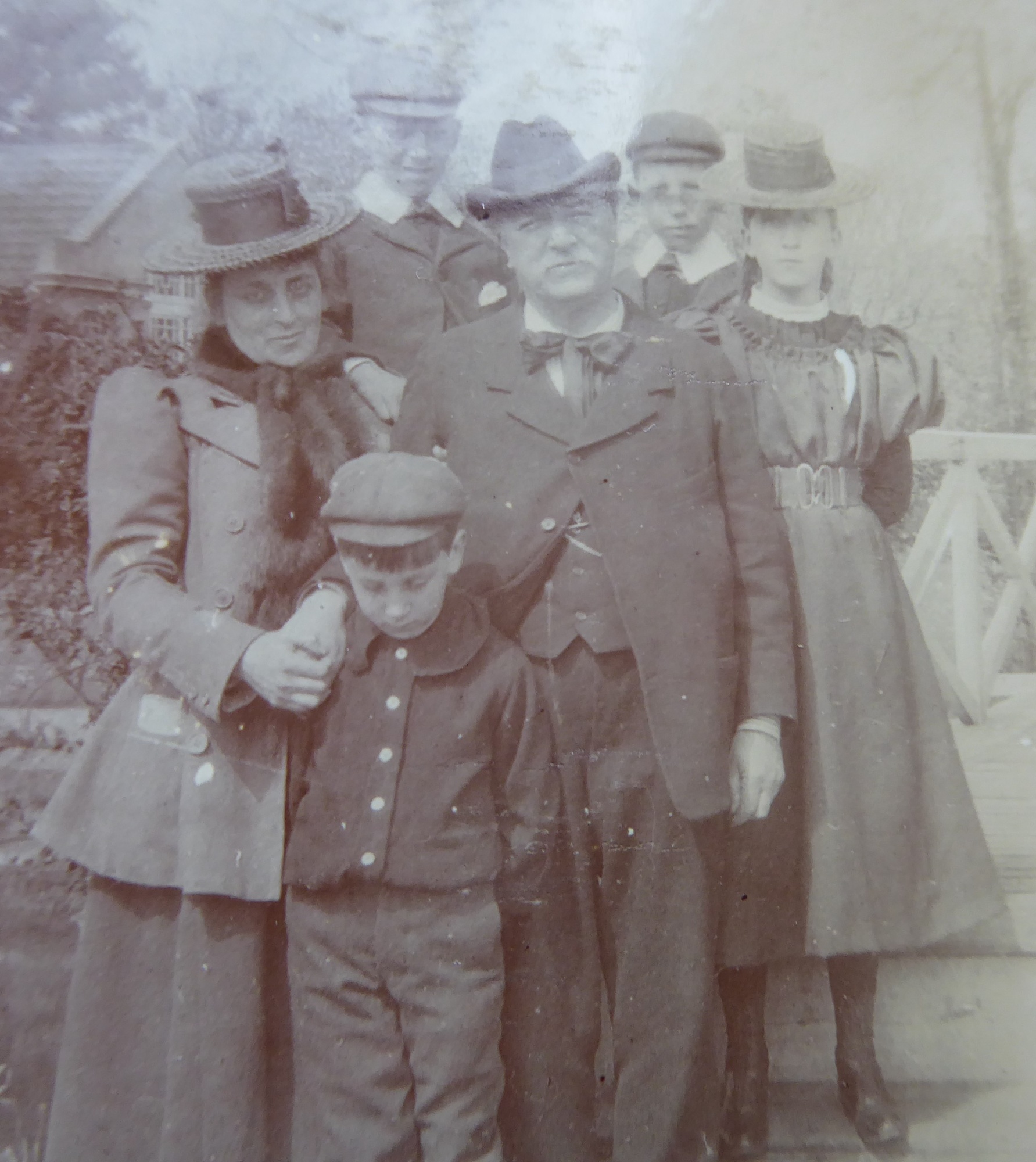
Cecil’s father, Henry Meiggs Jnr, was married to Gertrude Santley, who was the daughter of the most eminent baritone in Victorian England, Sir Charles Santley (1834–1922). The young Meiggs children, Gladys, Reginald, Cecil and Ronald, had, therefore, an extremely musical upbringing, and Cecil’s treble voice was renowned at Warwick School. His two brothers were also enrolled at the school in the early years of the 20th century, but we do not know why it was chosen, seeing that it was manifestly struggling with competition from the Middle School at the time. It is an unfortunate reflection of the era in which they lived that Henry Jnr died in the same year as his son Cecil, aged 42, but his particular affliction was tertiary syphilis, caught, it is suspected, in the brothels of Lima, Peru, to which he had been taken by Henry Snr.
Cecil’s mother wrote to the headmaster of Warwick School, Rev. Robert Percival Brown, after the funeral, and offered to finance the central portion of the east window of the chapel:
My dear Boys,
I wish it had been possible for me to tell you how much your loving tribute helped me in one of the saddest moments of my life. The tokens of love and devotion to my boy will for ever be treasured by me as some of my most hallowed memories.
And you, dear Cadets, whom he loved so, may you leave behind you, when your “last post” sounds, the memory of a blameless life, the highest tribute to your God, your Parents, your Masters and your School mates.
Yours ever gratefully,
Gertrude Meiggs
How do we know all this? It so happens that the American mother of a university friend of Mr John Jefferies was a Meiggs, and her father was a first cousin of Cecil.
And what of the window?
Above the five main panels we can see 14 angels, some playing musical instruments. The five main panels show the life of Christ. Going from left to right:
1) The birth of Christ.
2) Being taught in the temple, and learning carpentry from Joseph.
3) The Cecil Meiggs memorial window itself, showing the crucifixion.
4) The ascension.
5) The resurrection.
What the Romans put on the cross on which Jesus was crucified was described in St John’s Gospel: Pilate also wrote an inscription and put it on the cross. It read, “Jesus of Nazareth, the King of the Jews.” Many of the Jews read this inscription, for the place where Jesus was crucified was near the city, and it was written in Aramaic, in Latin, and in Greek.
Henry Holiday obviously researched the wording that was reputed to have been used, and got his glass-maker to write the same text in all three languages. But here confusion reigned, as it is obvious (only if you study the window under high magnification, as I did many years ago, and apparently being the first to spot this extraordinary detail) that the Hebrew is correct, reading from right to left, but the Greek and the Latin are reversed, also reading from right to left.
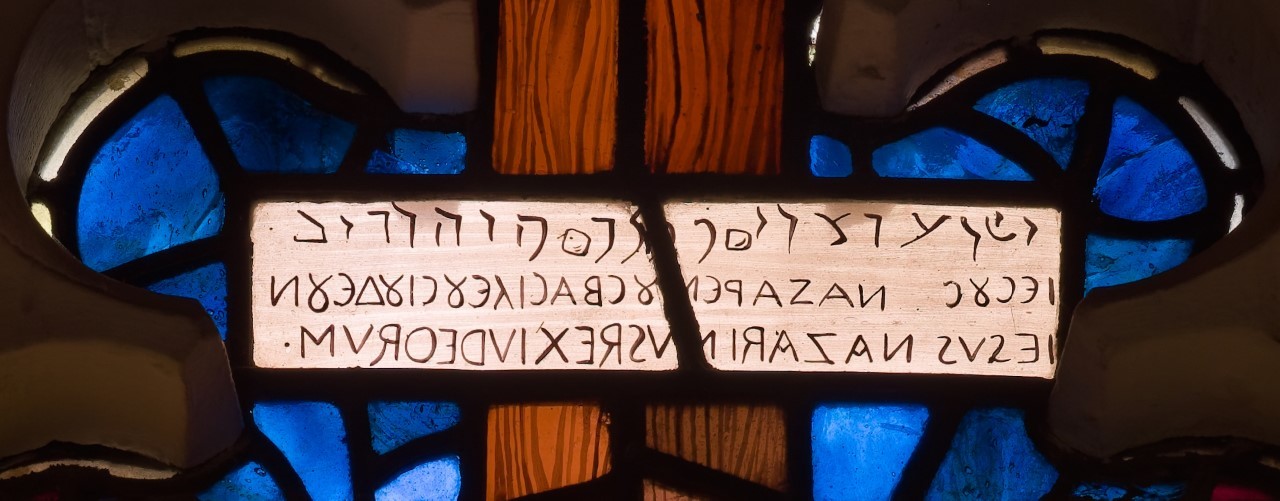
With grateful thanks to Peter O’Grady for the chapel photographs, to Barry and Sylvia Williamson and to John Jefferies for the initial enquiry about the window, and the connection with Cecil Meiggs. The photographs of the Meiggs and Santley familes come from “Granny Meiggs’ Album” (i.e. Gertrude’s), using an extremely early Kodak camera brought over from New York in 1888.
Gervald Frykman, October 2020.

